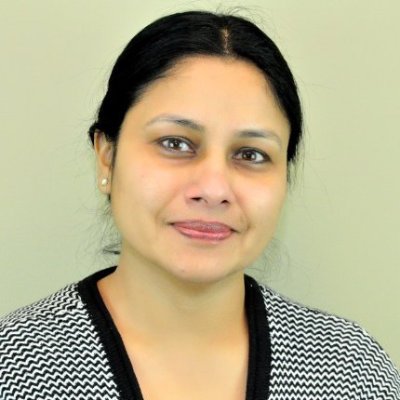Contribute
| MITHAS: Pleasing Sarod Instrumental And Hindustani Vocal Concert |
Shuchita Rao
11/05/2015
(This article is sponsored by Masala Art)
The Hindustani music offering at a MITHAS concert on
Sunday, November 1 featured Sarod player Dr. George Ruckert in the first half
and vocalist Shri Sandip Bhattacharjee in the second half. Wearing an elegant
cream Kurta pyjama and accompanied by his wife, the well known Kathak danseuse
Gretchen Hayden dressed in a striking red bandhni salwar kameez on the tanpura,
Dr. Ruckert opened the program with an evocative rendition of the romantic raga
Madhuvanti. Commencing with a slow unmetered alaap and followed by a metered jod
movement, the mature artist’s practiced hands gave definitive shape to the
varied contours and pathways in the raga within the first fifteen minutes. Dr.
Ruckert’s style of playing the Sarod immediately brought to the mind the
beautiful music of his Guru, the late Ustad Ali Akbar Khan of the Maihar
Gharaana(school of music). A composition in sixteen beat rhythmic cycle
teentaal followed the alaap and jod movements with the tabla entering the musical
equation with great elan. In establishing the raga in this section of the
rendition, the focus would shift alternately from unfurling the magic of the
melodic aspect through the display of ornamentations such as smooth glides
across notes in multiple octaves to play with the rhythmic aspect of the
composition. The tabla accompaniment was provided by popular New England artist
Shri Nitin Mitta, who learned the art under Pandit G. Satyanarayana of
Hyderabad and subsequently under Pandit Arvind Mulgaonkar of the Farukkhabad
gharana. Dr. Ruckert showed his appreciation
for Shri Nitin Mitta’s spontaneous improvisations with smiles and loud
utterances of the Hindi phrase “Kya Baat Hai†every now and then. Shri Nitin
Mitta returned the compliments by openly appreciating Dr. Ruckert’s command
over his instrument. The end of the presentation was marked by a resonant and
spirited climax featuring powerful strumming of strings on the sarod and a
tihai movement on the tabla. After re-tuning his instrument, Dr. Ruckert proceeded to
play a thumri in Raga Khamaj. He explained that in the mid-ninteenth century,
the thumri genre was developed alongside kathak dance in the Lucknow city of
Northern India. Since the words/lyrics of the composition held great importance
in Thumri and people wondered if it could be played on an instrument. The
legendary sitarist Ustad Vilayat Khan set a trend when he started including
thumri in some of his performances. Dr. Ruckert mentioned that thumris often
communicated a sense of longing for the beloved and briefly sang the words of
the thumri “Kaun gali gayo shyaamâ€. He also translated the lyrics in English
for the benefit of the non-Hindi speaking members of the audience - “In which
lane will I find my beloved Shyama?†asks Radha, Lord Krishna’s divine consort.
The thumri had two movements – the first one was set to 14 beat cycle chachar
and the second to a sixteen beat cycle teentaal. To demonstrate a
characteristic feature of the thumri, Dr. Ruckert returned to the refrain “Kaun
gali gayo shyaam†in 14 beat cycle chachar after playing fast melodic taan
movements in the second movement and concluding with a “laggi†section
featuring a heightened display of tabla improvisations in the sixteen beat
cycle teentaal. “I am taking a class in folk music while pursuing an
undergraduate degree in Brain/Cognitive Science at MIT†said Michelle, a
concert attendee who plays the Western piano and violin instruments. “I find
Indian music very different from what I have ever heard. The sound provided by
the drone instrument in the background is especially intriguing†she said. The featured performer for the second half of the MITHAS
program was Shri Sandip Bhattacharjee, a scholar from the prestigious Sangeet
Research Academy (SRA), Kolkatta and disciple of Ustad Mashkoor Ali Khan and
his brother Ustad Mubarak Ali Khan from the Kirana Gharana. Shri Ramchandra
Joshi, disciple of vocalists Smt. Veena Sahasrabuddhe and Smt. Krishna
Mukherjee accompanied him on the harmonium while Shri Nitin Mitta accompanied
him on tabla. Shri Bhattacharjee began with a slow vilambit ektaal (12
beat cycle) composition “Rasiya ho na jaaâ€
in evening Raga Marubihag. The interplay
of two madhyams in Raga Marubihag was shown delicately, immediately drawing a
positive response from the audience. The development of Marubihag was
structured and with adequate emphasis on khadaj, gandhar, pancham and shadaj
notes, creative phrases that revealed the landscape of the sunset raga
effectively. The artist modulated his voice with great skill many a time
opening a sequence of phrases with powerful voice projection. His robust and
virile voice, navigating multiple octaves of the raga with ease sounded
particularly impressive in the upper octave. He engaged the attention of the
audience by sometimes using lyrics, sometimes sargam(solfege) and at other
times aakaar (using the long aa vowel to expand on a movement). The alaaps in
the antara(second part of the composition situated in the upper register) used
taan (fast melodic movements) patterns. When he returned to the sthaayi (first
part of the composition situated in the lower register), the vocalist impressed
the audience with a display of excellent breath control, strength and vigor in
the delivery of taans. Moving to a faster tempo drut teentaal (16 beat cycle)
composition “Moray Bulma aja hoon na aayeâ€,
Shri Bhattacharjee sang varied taans ending at different notes such as Madhyam
and Khadaj. Shri Nitin Mitta got an opportunity to display his skills in a
brief spotlight on the tabla at this point. Shri Ramchandra Joshi followed the
vocalist closely and confidently and also added several imaginative phrases to enhance
the vocal rendition. As his second offering, Shri Bhattacharjee presented the
popular traditional composition “Sajan
moray ghur aaye†set to madhyalaya (medium tempo) sixteen beat cycle
teentaal in Raga Jog. Pleasing short alaaps, a variety of bol-taans, a
comfortable perch on upper Shadja and cleverly constructed taans were the
highlights of this offering. Shri Bhattacharjee sang a gat bhaav thumri “Shyaam Bina chain na aavay†set to addha
teentaal(16 beat cycle) in raga Desh next. The pangs of separation in a display
of “viraha†rasa by the naayika, Radha were conveyed effectively in this
semi-classical piece. Shri Ram Joshi’s phrasing for the thumri was colorful
and Shri Nitin Mitta dazzled the
audience with his crisp delivery in the faster laggi section of the thumri. In
a surprise ending the melodious Dadra “Beeti jaat barka ritu†was sung in a
sprightly manner to the twelve beat ektaal cycle. Fast taans sung towards the
end displayed the vocalist’s command over sur and taal. The concert ended with a beautiful thumri in Raga Bhinna
Shadja “Yaad Piya Ki aayeâ€
popularized by the legendary Patiala-Kasur Gharana vocalist, the late Ustad
Bade Ghulam Ali Khan Saheb. The opening to the thumri was particularly evocative
with a couplet imploring the raven bird to eat all of the poet’s human body flesh
it desired except for the two eyes because they still held the hope of seeing
the beloved (Kaaga, mori itni araj
tujhse, chun chun khaiyyo maas, khaiyyo na tu do naina mere, inhe piya milan ki
aas). A conscious foray into ragas
other than Bhinna Shadja gave a ragamaala(garland of ragas) flavor to the
piece. Set to the attractive “lavani†variation of a 8 beat rhythm cycle
“keherwa†theka, the thumri touched the hearts of the audience. The tabla player Shri Nitin Mitta’s comfort in alternating
with accompanying the Sarod instrument in the first half and a vocalist in the
second half was a striking accomplishment and an interesting feature of the
MITHAS concert. The audience thanked all
the artists by giving them a standing ovation.
You may also access this article through our web-site http://www.lokvani.com/

